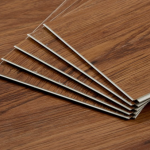
Zongzi in various parts of China presents rich diversity due to differences in regional culture and eating habits, which is mainly reflected in the appearance, zongzi leaves, fillings, taste and cooking methods. The following is a comparison of the characteristics of zongzi in various places:
- Northern Zongzi: mainly sweet
Representative regions: Beijing, Shandong, Shanxi, etc.
Features:
Zongzi leaves: mostly reed leaves.
Appearance: large in size, commonly square or triangular.
Fillings: mainly sweet fillings such as red dates, bean paste, candied dates, etc., and glutinous rice is usually not seasoned.
Classic: Beijing “bean paste zongzi”, Shandong “yellow rice zongzi” (using rhubarb rice instead of glutinous rice).
- Jiangnan Zongzi: both salty and sweet
Representative regions: Zhejiang, Jiangsu, Shanghai.
Features:
Zongzi leaves: fresh bamboo leaves or indica leaves, with a strong fragrance.
Salty Zongzi: Jiaxing’s “Fresh Meat Zongzi” is the most famous, with pork belly marinated in soy sauce, fat but not greasy; Huzhou’s “Long Zongzi” is shaped like a pillow and has rich fillings.
Sweet Zongzi: Red bean paste Zongzi and red bean Zongzi, often eaten with sugar.
Special: Suzhou’s “Gray Soup Zongzi” (rice soaked in water with plant ash, golden in color, soft and glutinous in taste).
- Guangdong Zongzi: Luxurious and Rich
Representative regions: Pearl River Delta, Chaoshan.
Features:
Filling: Salty Zongzi will add egg yolk, barbecued pork, scallops, mushrooms, sausages, etc., which can be called “the luxury set meal in the Zongzi world”.
Classic: Zhaoqing’s “Wrapped Steamed Zongzi” (wrapped in winter leaves, mung bean and pork filling, weighing one pound); Chaoshan’s “Double Combination Zongzi” (half salty and half sweet).
Sweet Zongzi: Alkaline Zongzi (dipped in syrup or honey), or lotus paste and chestnuts.
- Southern Fujian Zongzi: Mountain and Sea Flavor
Representative regions: Fujian and Taiwan.
Features:
Salty Zongzi: Southern Fujian “Roasted Pork Zongzi” must be added with braised pork, dried shrimp, scallops, and braised eggs, and it is more authentic to pour sweet and spicy sauce.
Sweet Zongzi: Taiwan’s “Eight Treasure Zongzi” contains lotus seeds, longans, etc.; Hakka “Kue Zongzi” is wrapped with glutinous rice flour skin.
Special craftsmanship: Some areas in Fujian use “alkali Zongzi” (adding alkaline water), which has a chewy taste.
- Southwest Zongzi: Spicy and unique
Representative regions: Sichuan, Yunnan, Guizhou.
Features:
Sichuan pepper and salt Zongzi: glutinous rice mixed with pepper powder and salt, sandwiched with bacon, spicy and fresh.
Yunnan bamboo tube Zongzi: baked with fragrant bamboo tubes, with bamboo fragrance; Dai “pineapple Zongzi” is stuffed with fruit.
Guizhou grass ash Zongzi: similar to ash soup Zongzi, soaking rice in straw ash water.
- Ethnic minority specialties
Guangxi Zhuang: “Humpback Zongzi” (long strip, with a bulge in the middle like a humpback).
Hainan Li: “Five-color Zongzi” (glutinous rice dyed with plant juice, colorful).
She: “Suga Leaf Zongzi” (wrapped with sedge leaves, about 30 cm long).
The diversity of Chinese rice dumplings reflects the dietary differences of “salty in the south and sweet in the north”, and also integrates local products and folk culture.

